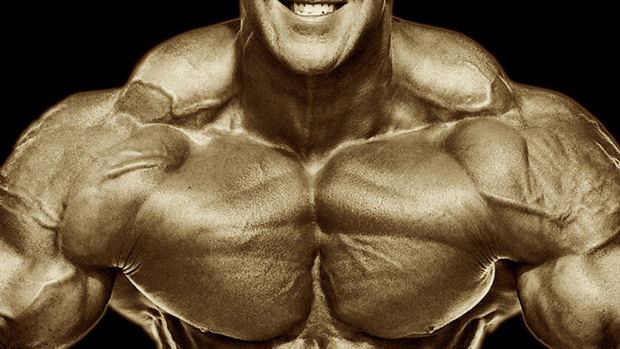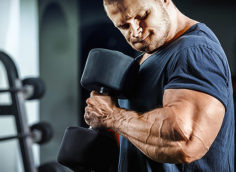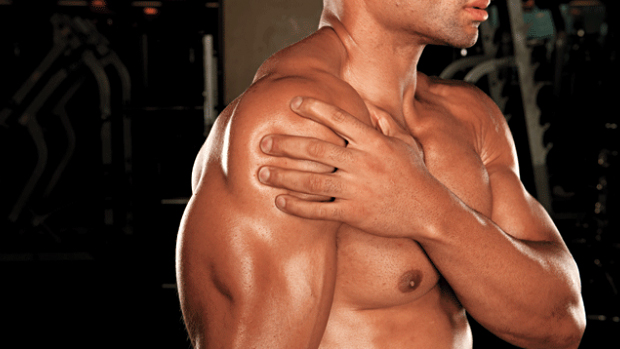A wise man once said that the traps make the man. But in today's world, it seems that any formidable way of training the traps break the man. Gurus say that barbell shrugs neglect the lower traps and contribute to poor posture, namely hunched and internally rotated shoulders. Computers, video games, and lack of quality physical education don't help either.
The Problem with Shrugs
As the upper traps get all the glory, the obvious choice is the barbell shrug. But training the traps with barbell shrugs is troublesome. From an outside view, they're always done with bad posture. Bad posture on top of bad posture results in atrocious posture. From an inside view, bad posture (and shoulder function) is a consequence of poor upward scapular rotators (the traps and serratus anterior).
With shrugs, since the range of motion is small, a lot of weight can be handled. A lot of weight means a lot of strength. A lot of strength in the traps and upward rotator sounds good, but the problem is that the hunched posture also primes the downward rotators of the scapulae (rhomboids and levator scapulae) to activate. So essentially, you're breaking even.
Perhaps it's best to find an alternative exercise for building an unyielding yoke while also keeping our shoulders functioning at their peak.

Mike Robertson previously recommended overhead and scaption shrugs to strengthen the upward rotators, because any time the upper arm is either flexed or abducted above 90 degrees, the scapula is upwardly rotated. But both have drawbacks.
Overhead shrugs feel and work great without weight, but once you stabilize a respectably loaded barbell overhead, you get distracted. It's like the guys that do barbell shrugs with too much weight that have to spasm like a dying fish to get the barbell moving. Put enough weight overhead and both the quality and range of motion become shoddy.
Scaption shrugs can't be loaded effectively. You're limited by your shoulder strength. You can't use a dumbbell heavier than one you can lateral or front raise. Even then you have to have the isometric strength to hold it at lockout. But the traps are capable of handling more than 40-pound dumbbells.
So what we're looking for is an exercise that isn't cutesy, gets the scapulae upwardly rotated, makes us feel manly, and can be loaded efficiently and effectively.
Shrugging Solution
There are countless shrug variations. You can use dumbbells, barbells, pulleys, machines, and more. You can shrug while propped on a dip bar, or suspended from a pull-up bar. You can shrug yourself to death, but let me talk about a new way to train the yoke.
To begin, we need to talk about front squats for a minute.

It's well known that front squats stress the upper back. Charles Poliquin, Mark Rippetoe, and others recommend keeping the repetitions low(er) when training front squats because the upper back will often fry before the legs. Bill Starr once said that front squats tax the upper back just about as well as any row.
Whether that's true is debatable, but we can agree that the upper back is stimulated in some capacity because the bar is supported by the shoulders. To keep the weight in place, the upper arm has to remain near parallel to the ground, otherwise the barbell would roll off. This is why coaches cue for high elbows during the front squat. And for the elbows to remain high, the scapulae have to hold an upwardly rotated position.
So front squats get the scapulae upwardly rotated. They can be loaded efficiently and effectively. And they are pretty damn manly. Borrowing the concept of the Hise shrug – putting a barbell in a traditional squat position, but shrugging instead – we can create front-squat shrugs for training the traps and serratus anterior.
Set Up and Performance
It starts with the grip. Keep the hands just outside of shoulder width. If you lack wrist mobility, ditch the number of fingers you have around the bar. The weight is supported by the meat of the shoulder, not the fingers. You only need two or three fingers around the bar, and they don't need to grasp it.
Truthfully, the hands don't need to be there at all. But they make it easier to get the elbows high, which is a sign of an upwardly rotated scapula. Alternatively, you can use straps if you can't get any fingers under the bar. The crossed arm grip isn't recommended. My scientific explanation for this is that it just doesn't work as well.
Once you have your grip around the barbell, lift your elbows as high as you can. The higher the better. Shrug your shoulders and hold the contraction for a second or two at the top. Think of moving through the thoracic spine. Cue your shoulders to your ears, elbows through the roof, and bar to the chin.

The front-squat shrug can be used with any loading strategy or rep scheme. Start at 135 pounds for 10 and add weight or reps from there. I recommend a few weeks of hitting sets of twenty reps to prime the body and shoulder girdle for more intensive loading. This also helps you get a feel for the lift.
I've yet to have a client not have "that weird feeling in the middle of their back" on this exercise. It also helps teach people what scapular wall slides and similar exercises should feel like. Give it a shot, and start including it in your training.
That's a Wrap
Excluding all trap exercises but front-squat shrugs is extreme. Farmer's walks, trap bar shrugs, dumbbell shrugs, even barbell shrugs are all great exercises. The upper traps get a bad rep sometimes, but they play a huge role in neck, shoulder, and thoracic spine stabilization – something especially important for collision and combat athletes.
Fact is, some part of the trapezius plays a role in nearly all upper body movements, so it might be time to redirect your focus to this massive muscle to see improvements elsewhere in your training.
Perhaps the traps do make the man after all?





